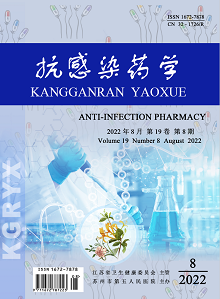LUO Min, SU Mu, LI Mei-yan, CHEN Huan, WANG Yuan-min
Objective: To analyze the perioperative prophylactic use of antibacterials in patients undergoing neurosurgical procedures in the hospital and the results on medical orders, so as to provide reference for promoting rational use of drugs in clinical practice. Methods: A total of 1 062 surgical patients with type I-Ⅲ incisions, who were admitted to the Department of Neurosurgery of the First People's Hospital of Zunyi from August 1, 2019 to August 1, 2020 and received prophylactic use of antibacterials during the perioperative period, were selected as study subjects, of which, the number of patients undergoing the surgery with type I-Ⅲ incisions was 931, 109 and 22, respectively. The information such as age, type of incisions, use of antibacterials was collected for all patients, the medical orders for antibacterials were reviewed, and the patients' age, type of incisions, the selection of antibacterials for prophylactic use, the timing of administration, the maintenance time and rational use of drugs, etc. were analyzed. Results: The age of patients who underwent neurosurgical procedures in the hospital were mainly in the range of 18 to 65 years old (723 cases, 68.08%), and their type of incisions was mainly type I incisions (931 cases, 87.66%); in terms of selection of drug varieties, the antibacterial for patients with type I and type II incisions was mainly cefuroxime (75.40% and 72.48%, respectively), and the antibacterial for patients with type Ⅲ incisions was mainly ceftriaxone (81.82%). The time of administration of antibacterials for prophylactic use for patients who received the surgery with types I-Ⅲ incisions was 0.5-1 h before operation, accounting for 67.56%, 84.40% and 72.73%, respectively; in terms of medication maintenance time, there were only 382 cases (41.03%) with maintenance time less than 24 h for patients with type I incision, and there were 85 cases (77.98%) with maintenance time less than 48 h for patients with type II incision, and the maintenance time of all patients with type Ⅲ incision were more than 48 h. The results of medical order review showed that, the main reasons for irrational prophylactic use of antibacterials in the perioperative period included too long medication maintenance time (594 cases, 55.93%), irrational timing of administration (325 cases, 30.60%) and irrational selection of drug varieties (306 cases, 28.81%). Conclusion: The prophylactic use of antibacterials for patients who underwent neurosurgical procedures in the perioperative period has serious irrationality, mainly including too long medication maintenance time, irrational timing of administration and irrational selection of drug varieties. The hospital should strengthen the promotion and training on rational use of antibacterials for clinicians, and perform periodic assessment to improve the level of clinical medical treatment.
